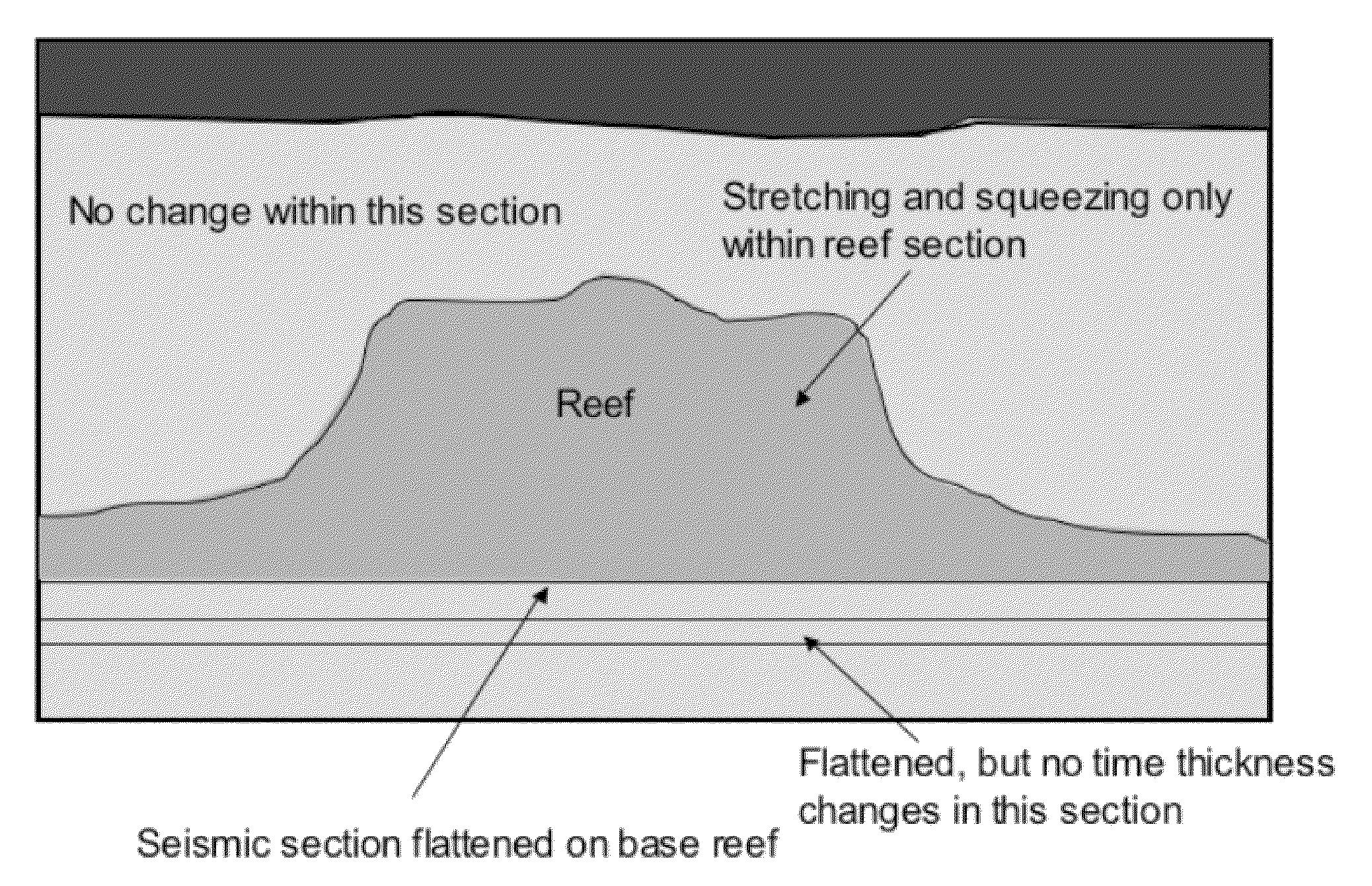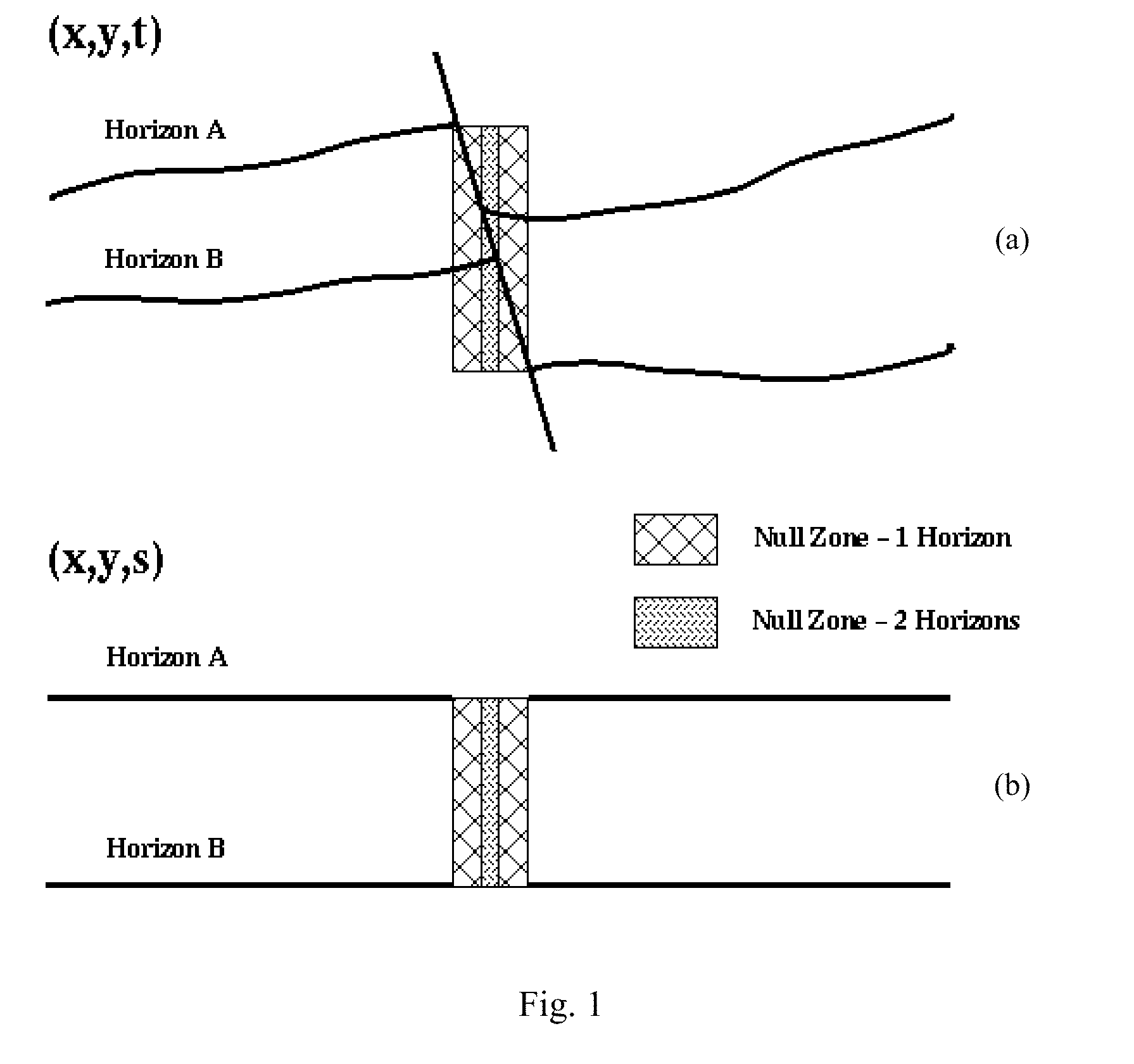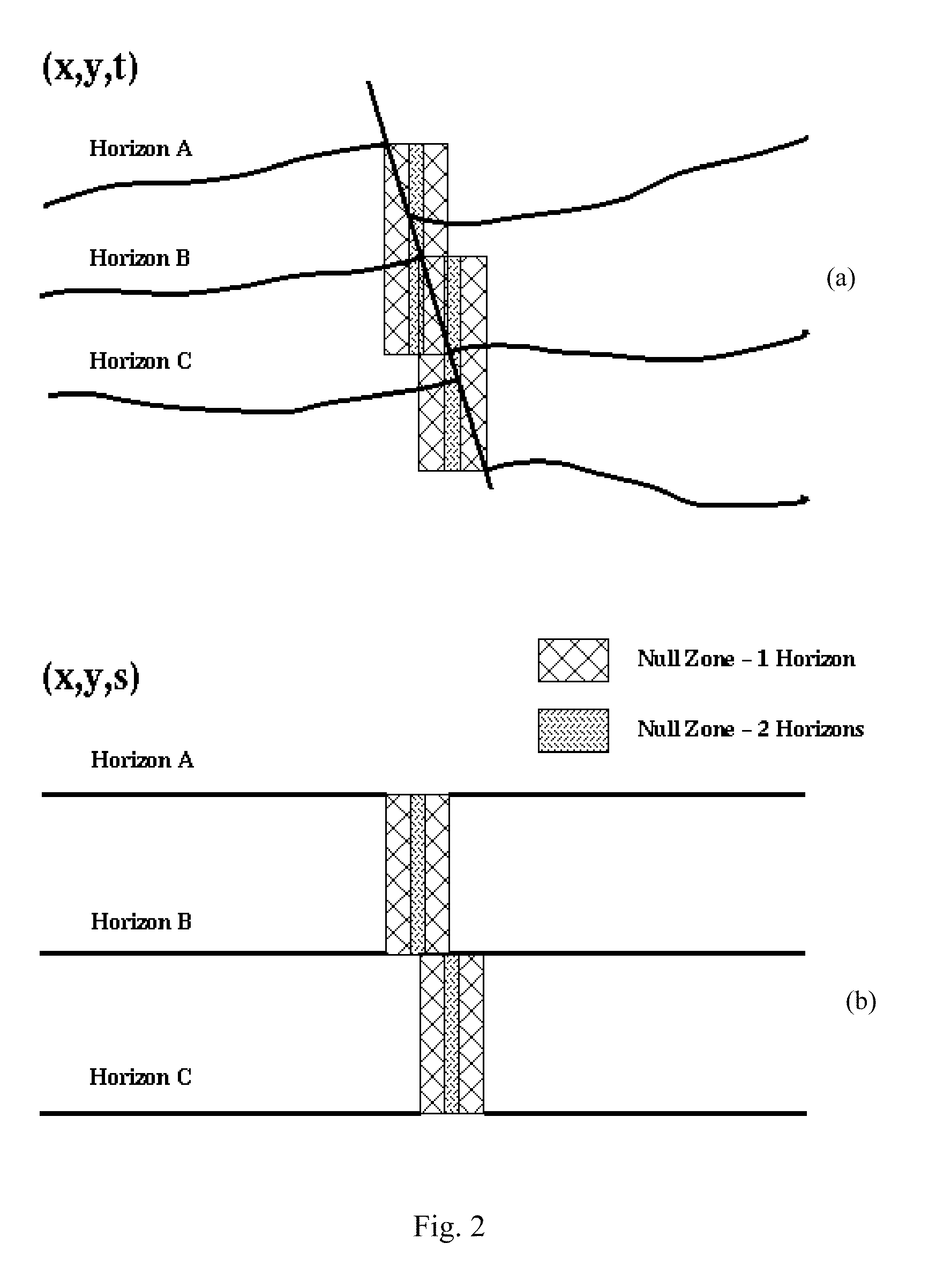Extraction of depositional systems
a depositional system and seismic interpretation technology, applied in the field of 3d seismic interpretation, can solve the problems of increasing the volume of data to be interpreted for each project, increasing the difficulty of finding and developing energy resources, and increasing the difficulty of exploration and efficient development of hydrocarbon reserves, so as to improve both the structural interpretation and the results.
- Summary
- Abstract
- Description
- Claims
- Application Information
AI Technical Summary
Benefits of technology
Problems solved by technology
Method used
Image
Examples
Embodiment Construction
[0107]The exemplary embodiments of this invention will be described in relation to interpretation of data. However, it should be appreciated, that in general, the systems and methods of this invention will work equally well for any type of 3-D data (such as seismic data) from any environment.
[0108]The exemplary systems and methods of this invention will also be described in relation to seismic interpretation. However, to avoid unnecessarily obscuring the present invention, the following description omits well-known structures and devices that may be shown in block diagram form or otherwise summarized.
[0109]For purposes of explanation, numerous details are set forth in order to provide a thorough understanding of the present invention. However, it should be appreciated that the present invention may be practiced in a variety of ways beyond the specific details set forth herein.
[0110]Furthermore, while the exemplary embodiments illustrated herein show the various components of the sys...
PUM
 Login to View More
Login to View More Abstract
Description
Claims
Application Information
 Login to View More
Login to View More - R&D
- Intellectual Property
- Life Sciences
- Materials
- Tech Scout
- Unparalleled Data Quality
- Higher Quality Content
- 60% Fewer Hallucinations
Browse by: Latest US Patents, China's latest patents, Technical Efficacy Thesaurus, Application Domain, Technology Topic, Popular Technical Reports.
© 2025 PatSnap. All rights reserved.Legal|Privacy policy|Modern Slavery Act Transparency Statement|Sitemap|About US| Contact US: help@patsnap.com



